Gearing Up For Fly Fishing
When gearing up for fly fishing, it's essential to focus on what will make your experience enjoyable and efficient. Start with the basics: a fly rod, reel, line, and some flies. For beginners, it might be wise to invest in a kit that includes everything you need, but buying each piece individually ensures you get exactly what suits you best.
Choose a five-weight rod around 8-9 feet long. It's versatile, working well for different waters. When selecting a reel, lighter is often better but ensure it's sturdy enough to handle aggressive fish. A weight forward floating line pairs well with your rod and makes casting easier.
Waders are game-changers if you're fishing in cooler waters. Companies like Orvis make top-notch versions that'll last a long time. If stocking up on gear, match your waders with quality boots. Opt for durability here—your feet will thank you after hours standing in a stream. Check those sole regulations to avoid fines.
Your vest will become a mini walking tackle shop. Fill it with clippers for clean cuts, forceps for unhooking, and floatant to keep those flies bobbing on the surface. Don't forget a leader straightener and various sizes of tippet. Leaders bridge your thick fly line with your delicate fly, providing the illusion that the fly is the main act. Keep a stash of different lengths and thicknesses — each water body calls for a different game plan.
A solid hat guards you against the sun, and polarized sunglasses are a true blessing. Polarized lenses cut down on glare, letting you see beneath the water's surface to spot fish you'll never see with the naked eye. Without them, you're simply flying blind.
And the stars of the show: the flies. You don't need 500 of them starting out. Focus on a few that mimic the bugs fish eat in your local waters.
- Dry flies like Adams and elk hair caddis float on the water, inviting flashy strikes from above.
- Nymphs like the wooly bugger sink beneath the surface, appealing to those vigilant lurkers.
- Pick up some hoppers or ants for lively summer fishing.
With all this gear in tow, you're well-equipped to face whatever waters you find yourself in. Fly fishing is as much about preparation as it is about luck—have your gear ready and nature will do the rest.
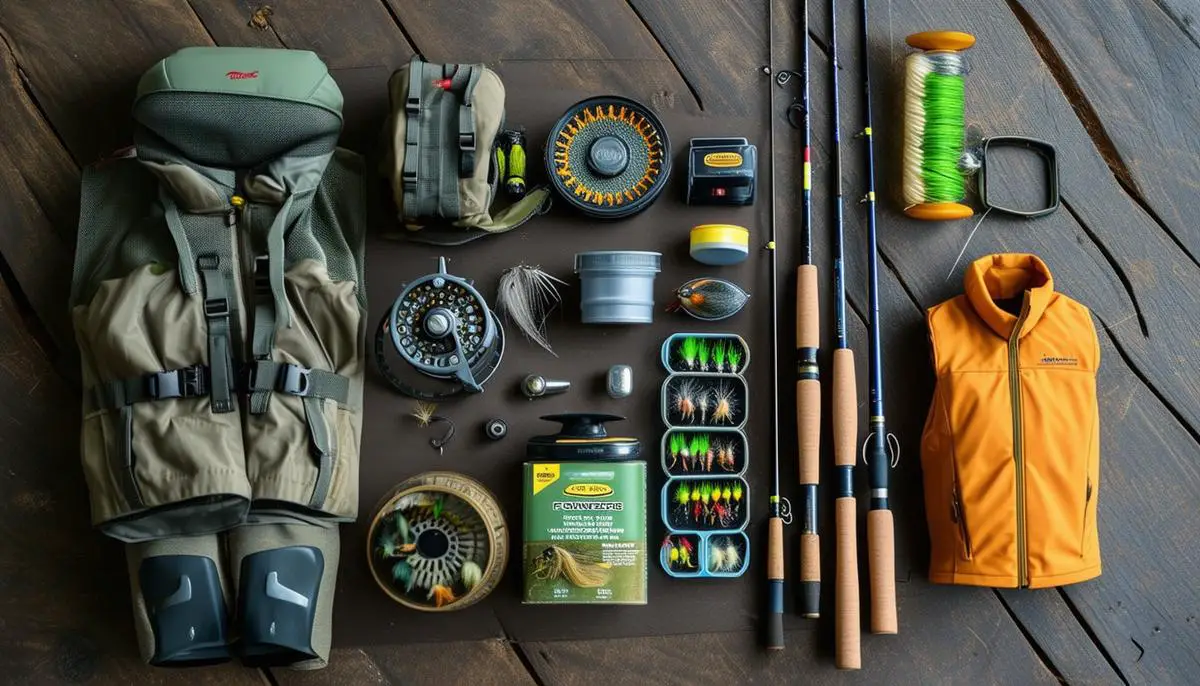
Casting Techniques
When it comes to casting in fly fishing, think of it as a dance—fluid, graceful, yet precise. It's the foundational skill upon which your entire fly fishing experience rests, and much like any dance, it starts with practice and repetition.
Begin your casting journey in your backyard or any open space where you won't snag anything but air. Here, it's all about building muscle memory. Feel the rhythm of your rod as you practice the basic cast. Remember, an essential element is timing your stops. Whether your wrist is stiff or relaxed isn't the main focus; rather, concentrate on executing that crisp, abrupt stop. It's what allows the fly line to extend fully and delicately settle onto the water.
Master the roll cast for those tricky, tight spots laden with vegetation. It's perfect for when the stream bank is brimming with flora, making a traditional overhead cast impossible. With the roll cast, the rod tip never ventures behind you, creating a deceptive flick that unfurlingly rolls your line out in front of you. It's a lifesaver when you're surrounded by greenery taller than your aspirations.
Once you've got the hang of the roll cast, it's time to refine your basic overhead cast. Precision is paramount here. Picture yourself delivering a delicate, bug-sized parcel to a very picky recipient – this is essentially your goal. The power isn't from brute strength, but finesse. Just remember the mantra: smooth beginnings, strong stops; it's the backbone of any successful cast.
Out on the water, positioning your fly becomes an art form. Fish think they rule the stream — prove them wrong by consistently placing your fly in their dining room. Understand the behavior of the fish by noting where they congregate—calm eddies, behind rocks, or in shaded areas. The often undervalued subtlety of aiming slightly upstream allows your presentation to drift naturally towards the wary fish, much like a real insect would.
Envision the water as a clock face where 12 points directly upstream. Cast at your fish from angles positioned naturally within this imaginary clock—you wouldn't throw them dinner at 9:00 from a 3:00 position. It's all about making your approach as flawless and natural as the drift itself.
Achieving quality casting takes dedication, but once you establish those fundamental skills, the waters are your oyster. With your new-found expertise from relentless backyard practice, combined with the tips on proper positioning and presentation, you'll soon find accuracy and confidence become second nature.
Remember, it's not about the longest cast, but the most accurate. Master both styles of casting and you'll adapt easily to any fishing scenario, from secluded streams choked with wild growth to wide, open rivers. The graceful ballet of a well-executed cast and the thrill of watching a fish rise to your well-placed fly make all that practice worth every minute.
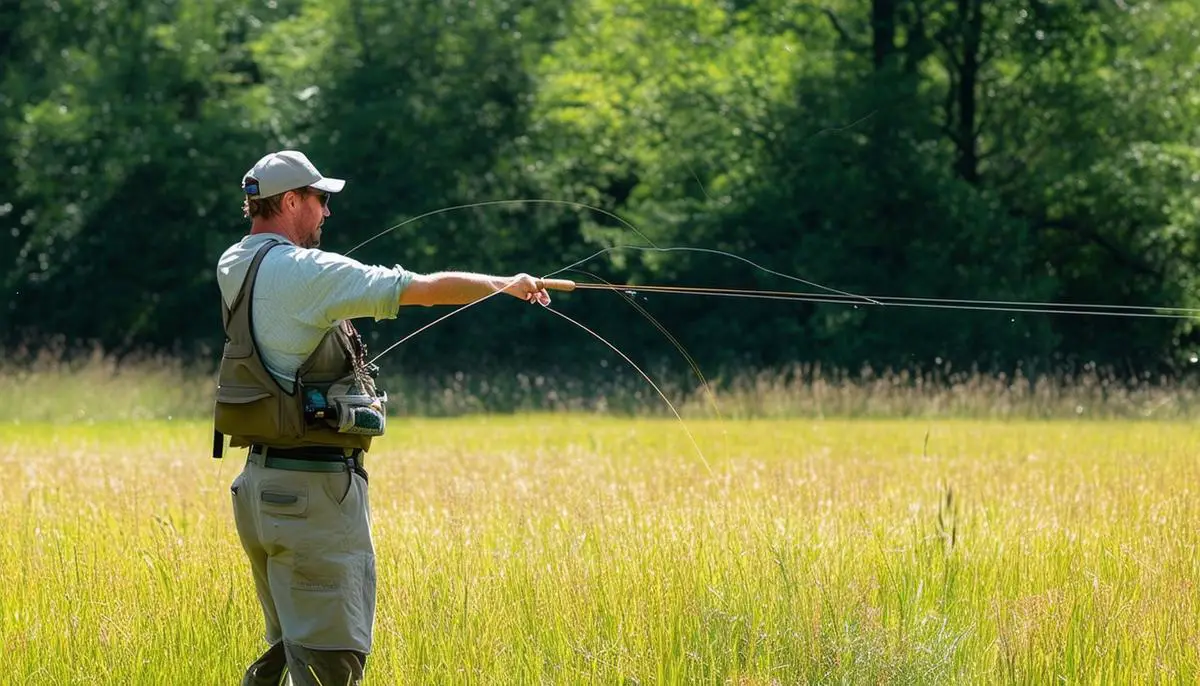
Understanding Fish Behavior
Fish are keen on combining safety with a readily available buffet and minimizing effort while doing so. As much as fly fishing demands artistry, it demands understanding the needs and behavior of those trout or bass lurking beneath the surface.
The first step to getting into the mindset of a fish is observing their natural habitats. Fish tend to favor areas where they feel secure yet can easily ambush food. Let's break down the secrets to where they hang out and why.
In-stream cover is prime real estate for trout. Their hangout spots often include:
- Deeper pools created by curves in the stream
- Undercut banks
- Sun-dappled eddies behind large boulders
Here, they can rest from the current's force while awaiting their main course. Zero in on these spots and be ready: there's often a hungry diner waiting!
Knowing what's on the menu for fish is equally pivotal. Fish dietary choices lean heavily on the insect population, making an insect hatch akin to their local food festival. When aquatic insects like mayflies, caddisflies, or stoneflies emerge and begin swarming, it's a flashing neon sign in a fish's mind. Trout and bass tend to key in on each type's vulnerable phases — which often occur during hatches, when insects transition from underwater nymphs to topwater dalliances. Mimicking these with your fly patterns can lead to exciting strikes.
Food is fantastic, but cover is cozier. Fish aren't just hanging behind those boulders for personal accomplishment—they're there because it's safer. Predators, both above and beneath the water, rarely offer second chances. Deep water and shaded pools provide refuge from these threats and are prime spots when scouting new fishing areas.
Another action-packed zone? Areas where currents shift and slow, called seams. These currents swirl emerging insects, floating delightfully disoriented onto some fish's radar. Casting your fly just above such a seam allows it to naturally drift into this food-concentrated zone, keeping your imitation fluttering just like the appetizers fish love to munch.
Close on the menu-farm scale are shallow riffles. Though they might seem insignificant, riffles teem with bug life. Their key point of attraction? Food densely packed and always on the move. Be ready to practice your stealthy creeping here: spooking fish is as easy as disturbing flies, requiring a careful approach to avoid casting dark suspicions over the water.
It isn't all about depth zones and riffles either. When winter thaw leaves streams brisk and blazing with fresh flow, those darkened back corners and undercut embankments aren't the places to be anymore. Then shallows and mid-channel feeding lanes become worthy dance floors ripe for emergent protein. Keep an eye out for spider-like movements, ripples kissing the surface created by something rapidly snatching bugs off before the next trout finale flash in broad daylight.
Seasonal savvy sprinkles here too. Tailoring tactics to the aquatic calendar can uplift your catch status from novice to expert. Night stakes rise with heat waves amid summer peaks. An encounter with nimble midnight nibblers becomes worthy talk the next morning, so be headline dedicated on that river calendar.
Knowing where the fish are hiding ensures every blissful, desperate cast—creating fly-fishing artistry nestled within those ripples, making every event practical and deadly.
So suit up, aim those casts behind shadows, ease floats to shallows ripe for upcoming streams. Anticipate dynamic runs; cast into willing stretches. Devour learning fish behavior. Diligent execution ensures both your seams burst with celebrations of tightened lines. Happy hunting, fellow angler— outwit them and uphold this current's honored ritual. Tight lines!
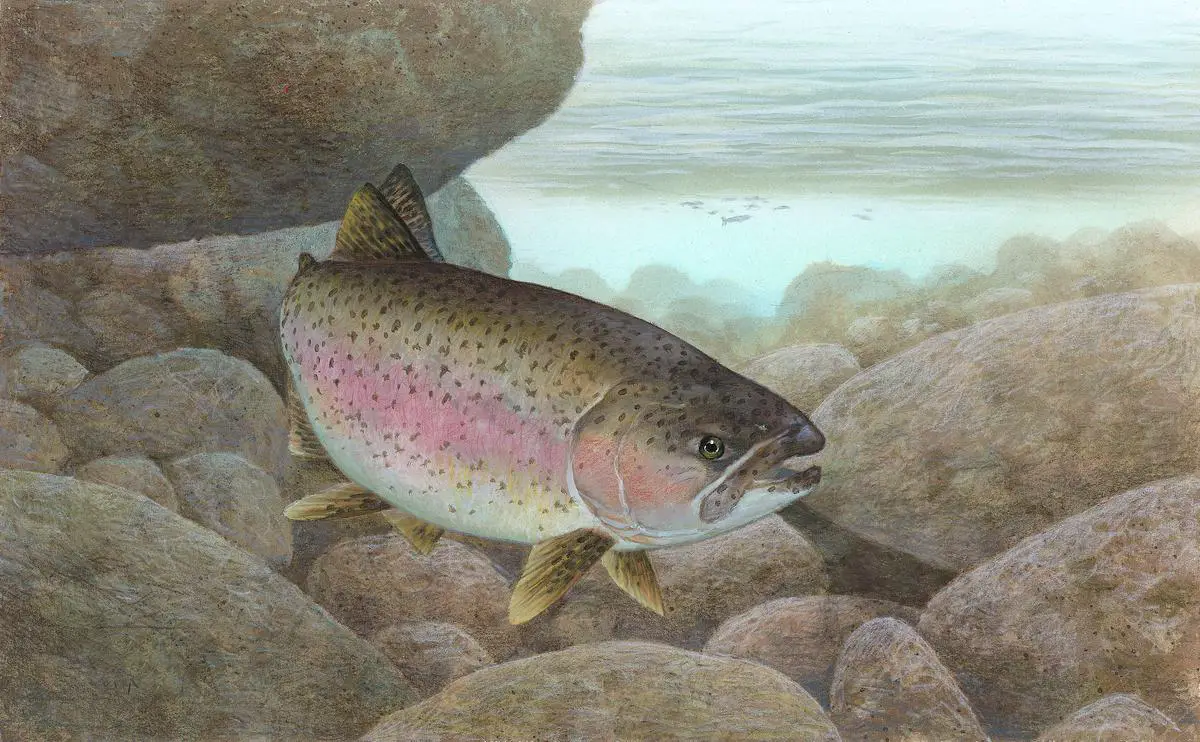
Fly Selection
Your fly selection can make or break your fishing trip. Start with versatile patterns such as the Adams, Elk Hair Caddis, Stimulator, Woolly Bugger, and a trusty terrestrial like a hopper or ant. These flies cover a range of situations and are effective in mimicking the variety of bugs fish love to nibble on. With sizes ranging from 8 to 14, you're prepared for the majority of hatches and feeding frenzies out there.
Adams
This all-purpose dry fly is a classic. The Adams can imitate various insects, from mayflies to midges, effectively fooling even picky fish. Its popularity might be due to its resemblance to numerous bugs, making it a go-to pattern in almost any condition. If you can only fit one fly in your box, the Adams is it.
Elk Hair Caddis
Next up is the Elk Hair Caddis—when it comes to mimicking caddisflies, this fly is king. Its buoyant elk hair not only gives it an excellent floating ability but also makes the fly highly visible. Best suited for fast water where its rugged nature holds against rapid currents. Trout just can't resist an Elk Hair Caddis skittering across the surface.
Stimulator
The Stimulator is about grabbing attention. Being an attractor fly, it resembles larger insects like stoneflies or even a juicy hopper. The Stimulator screams "eat me" with its bright body and leggy structure, making it essential for your bag of tricks, particularly in the summer.
Woolly Bugger
Then we have the Woolly Bugger, a workhorse in any fly box. This streamer covers a broad spectrum in its underwater action—whether you draw it slow or fast, trout, bass, and sometimes an enthusiastic catfish will take notice. It's versatile, shifting from nymph to leech or minnow depending on your line and speed of retrieve.
Hopper or Ant
Finally, no fly box is complete without a good terrestrial like a hopper or ant pattern. In the summer months, especially when grasshoppers are plentiful, trout can't help but rise to these land-bound intruders dropping from above. Likewise, the small yet mighty ant proves effective, especially after heavy wind gusts.
These selections should comprise the foundation, keeping your options versatile for any situation. Start lining your fly box with these reliable patterns for your aquatic adventures on any river or lake.
With this tried and true starter kit, your fly fishing game moves beyond luck and into skill and preparedness. Each fly offers its unique edge while meeting the challenges nature throws your way. Get those flies in your box, hit the waters armed with confidence and versatility. Tight lines and guaranteed excitement await!
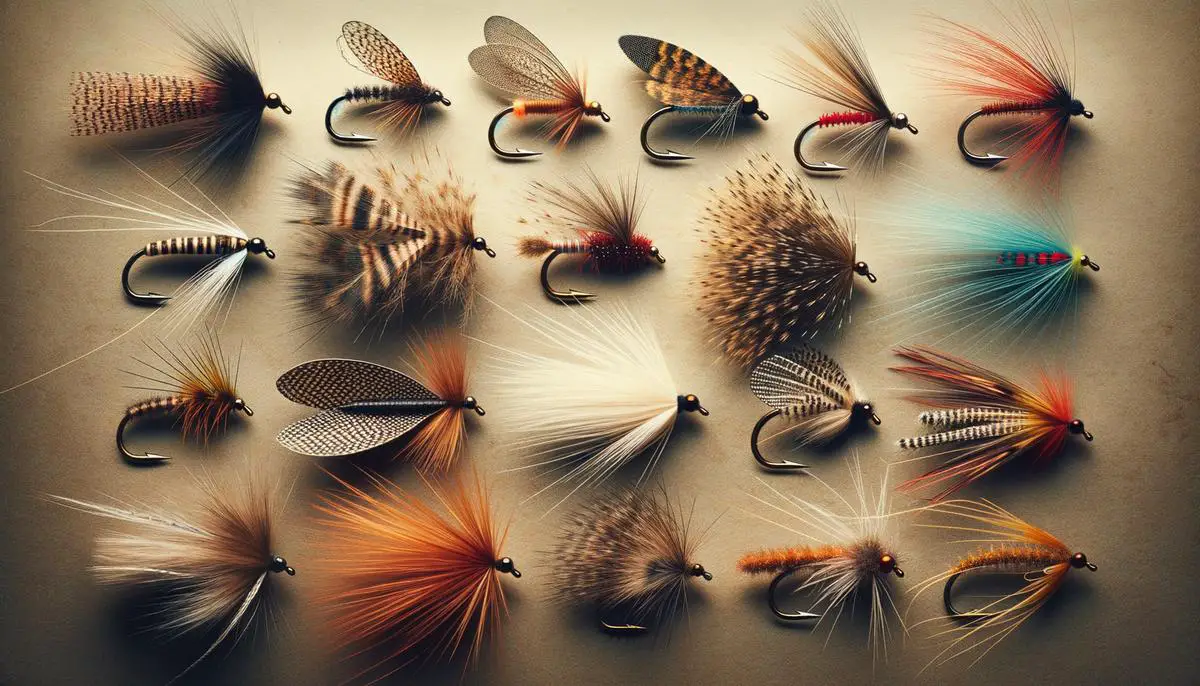
Safety and Etiquette
Whether you're a fly fishing beginner or seasoned angler, maintaining respect for both the environment and your fellow anglers is key. Fly fishing involves certain etiquette to ensure everyone enjoys the sport, and adhering to these universally accepted rules guarantees a harmonious experience for all.
Mindfulness of Surroundings
When stepping into nature, be aware that you are not the only one there. Before choosing your spot in the river or lake, take a good look around. Ensure that you keep a respectful distance from other anglers; nobody likes an unexpected intrusion while trying to land a trout. A distance of about 50 to 100 yards is generally a good buffer to avoid tangled lines or competitive casting.
Additionally, the position of your cast matters. Fish can become wary even over a shadow—literally. Casting your shadow over their feeding zones is sure to spook them. Approach with the sun at your back if possible, moving stealthily.
Safety Guide
Always check water conditions before you venture into a stream or river. Rising water levels can catch you off-guard. Be vigilant with currents and the weather. Fast-moving water can turn dangerous quickly, and flash floods are a real risk.
Essential Gear
- Waders and boots: Your personal wet-wear armor. Remember to pair felt-free, studded-soled boots for slick rivers, and layer up accordingly. A good pair of boots can mean the difference between a graceful trek back to the car or becoming acquainted with the riverbed. Also, watch where you're stepping, as river segments can camouflage dips challenging your mobility.
- Polarized sunglasses: Crucial for spotting fish and protecting your eyes from errant casts.
- Brimmed hat: Provides additional sun protection and can help you avoid eye strain.
Stay Alert
Awareness is key. If conditions change unpredictably, don't take unnecessary risks. Recognize when to call it a day and head back to safety. Keep an eye out for weather changes and rising water levels.
Feel fortunate to be out in nature, wading in the ripples and casting your line. Keep those casts gentle and respect your fellow anglers. Stay safe, upright, and confident as you immerse yourself in the environment. Enjoy the journey, and tight lines!
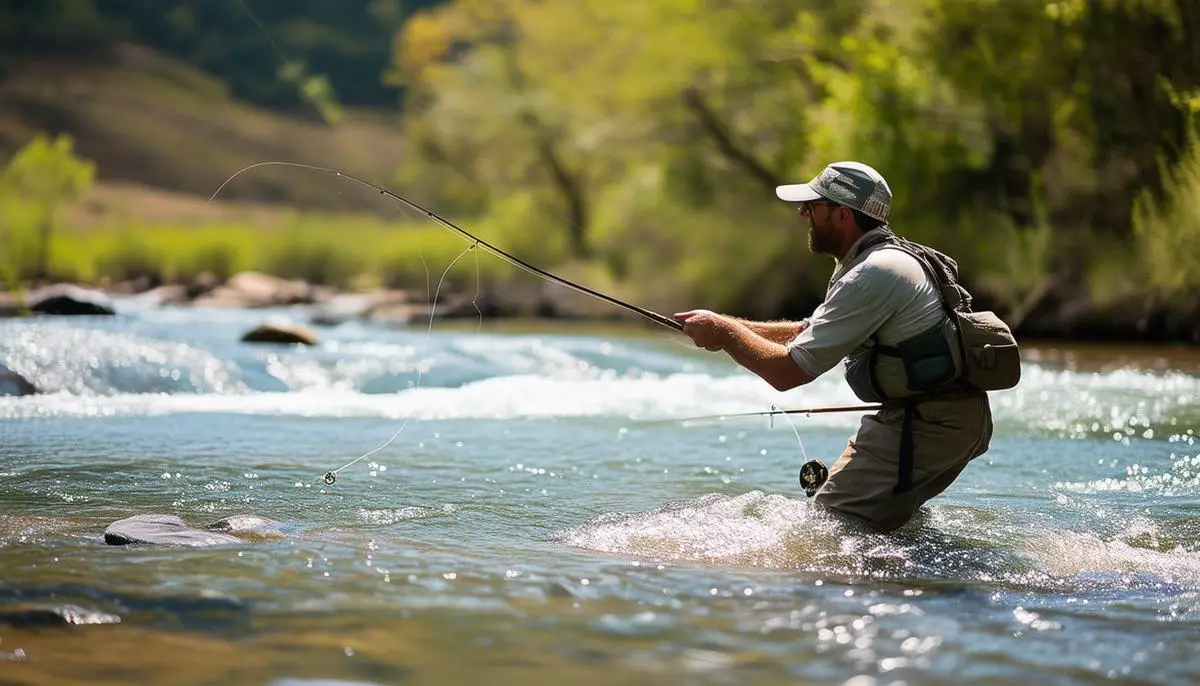
With your gear ready and a solid understanding of fish behavior, you're well on your way to mastering the art of fly fishing. Remember, preparation and knowledge are key to transforming each outing into a rewarding experience.1 Tight lines and happy casting!
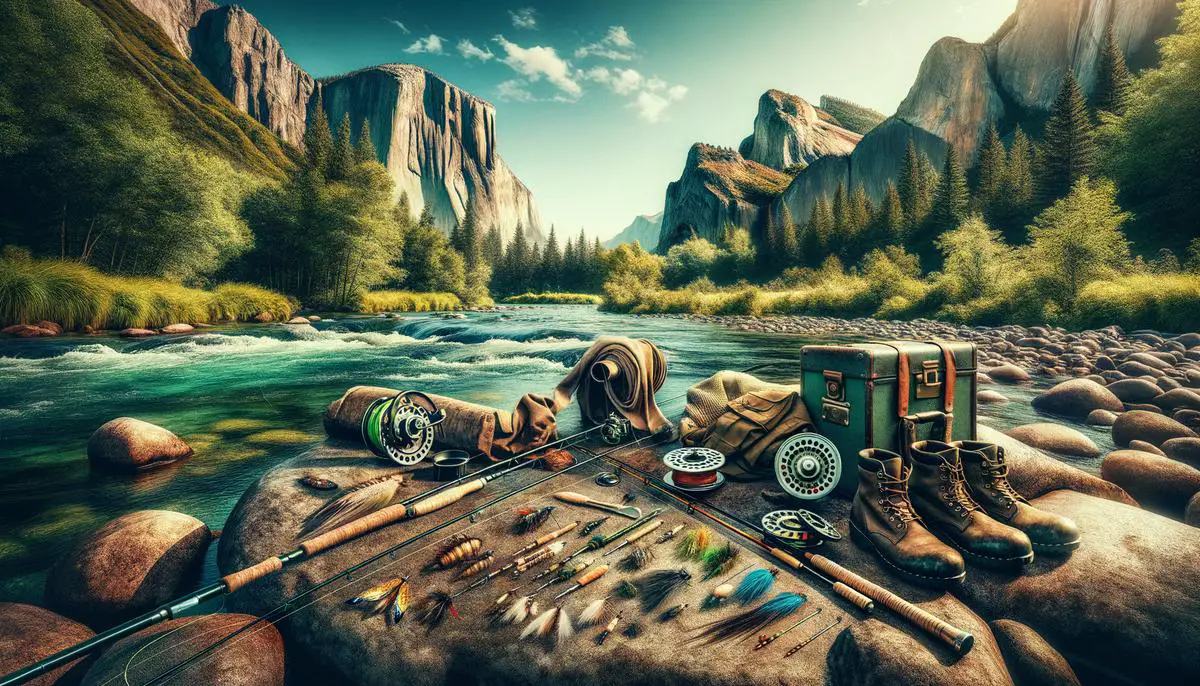


Welcome to our blog!